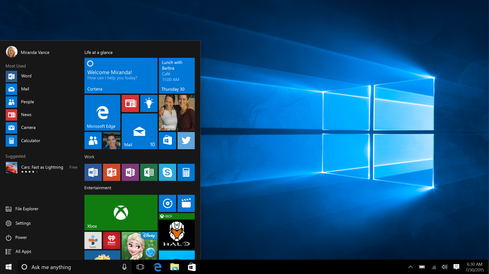Microsoft Explains Windows 10 Privacy PoliciesMicrosoft Explains Windows 10 Privacy Policies
In response to the uproar over privacy concerns, Microsoft executives are clarifying how information is collected and used in Windows 10.


Will Windows 10 Make It To 20? IT Watchers Discuss
Will Windows 10 Make It To 20? IT Watchers Discuss (Click image for larger view and slideshow.)
Since Windows 10 rolled out to the general public in July, users have voiced their concerns about how the operating system collects, stores, and shares their information.
Microsoft has repeatedly acknowledged the advanced security features in Windows 10, but the company has done little to openly address these criticisms -- until now. Terry Myerson, executive vice president of operative systems, took to the Windows Blog Sept. 28 for a more detailed explanation of how Windows 10 uses personal data.
Windows 10 was created on the foundation of two core privacy principles, Myerson explains. First, the OS gathers information so it will perform better for each user; second, users have control over the information collected. Data is encrypted before being sent to secure storage on Microsoft servers.
[More from Redmond: Azure Data Lake update includes analytics tools.]
To give Windows customers some peace of mind, Myerson provided a list of the information that is and isn't collected and stored through Windows 10:
Safety and Reliability Data
Microsoft does collect an anonymous device ID, device type, and application crash data so it can continue improving application reliability. This data does not include user content or files, and Myerson reports the company takes "several steps to avoid collecting any information that directly identifies you, such as your name, email address or account ID."
Myerson cites an example of how this information was used last month, when aggregate data indicated a certain version of a graphics driver was crashing on Windows 10 and causing PCs to reboot. Microsoft contacted the company building the driver, collaborated with them to send a fix to Windows Insiders, used Insider data to confirm the problem was solved, and then publicly released the solution within a 48-hour period.
A new feature coming later this year will allow enterprise customers to disable this data collection, Myerson notes, but officials do not recommend doing so.
Personalization Data
Windows 10 emphasizes the importance of a customizable user experience, but many of its features require more specific personal information. If the system knows your favorite sports team, for example, it can give you updates on game scores or provide app recommendations. If it records common words you use in text messages, it can improve its auto-complete function.
When it comes to personalizing Windows 10, the extent of information collected is up to you. If you opted to use the Express settings during Windows 10 setup process, you can still change your preferences in Settings or within the settings for specific apps.
Advertising Data
Microsoft does not scan your personal communications (including email content) or files in order to deliver targeted ads. This applies to Windows 10 and all Microsoft software, the company confirms.
About the Author
You May Also Like






